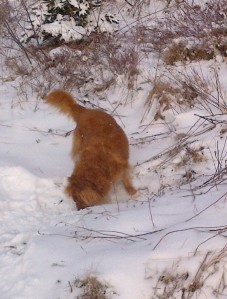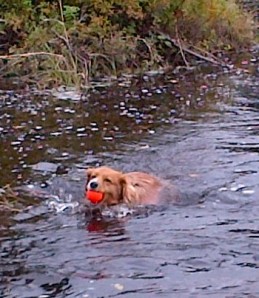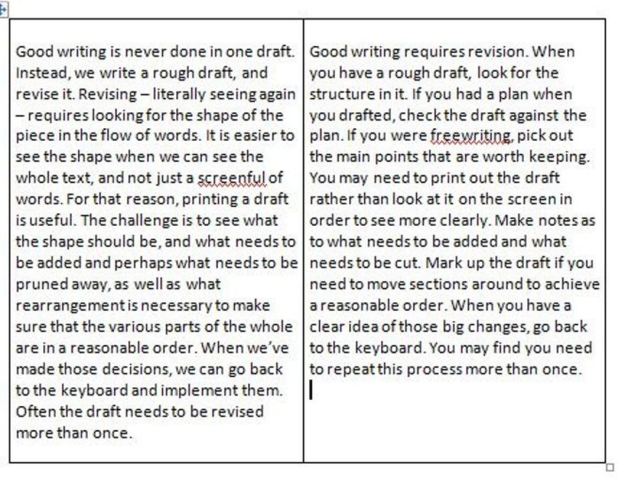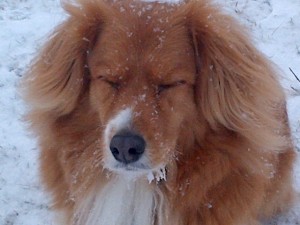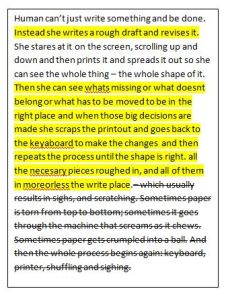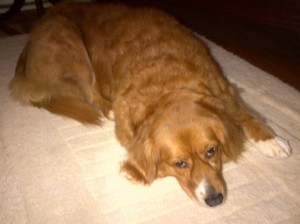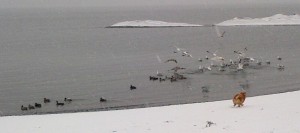Trouble doesn’t overthink things, which is one of the reasons she’s such good company. So she is not puzzling over the whys and the hows, as Human is — she is just delighted to be free of the cone of shame and to have the regimen of medications reduced to just lubricating drops until her next check with the surgeon.
The keratectomy has done its magic: within six days of the procedure the ulcer had shrunk to a pinpoint; on day twelve, it was pronounced fully healed. No stain uptake in any tissue. The vet, the assistant, the office manager, other clients in the waiting room — everyone had a huge smile, and there was a little wine with dinner that night.
Human continues to puzzle over how removing a microscopic layer of tissue can promote healing — it’s counterintuitive that a large raw surface should heal faster than a partially healed ulcer. But that’s what happens, in nine out of ten dogs, the surgeon says, and in the tenth, there’s usually some underlying unsuspected condition which has been interfering with the healing.
But of course, it does make sense. It’s a bit like throwing pots. When you work your clay on the wheel, you shape it to bring it closer and closer to your vision — but there are times when you have to let the whole thing collapse and start afresh. Fiddling with it, like debriding the ulcer, is just not working. Go back to the raw clay.
And throwing pots is like writing (isn’t everything?). Human believes in the power of revision, working with the draft until it becomes, through successive versions, closer and closer to what it should be. But there are also times when you have to put the whole mess aside, and start fresh. Go back to the raw clay. Whatever your chosen technique — blank paper, free writing, writing against the clock, turning off the monitor and writing blind — it somehow frees the clouded vision.
Warm thanks to Trouble’s vets in Halifax and to CullenWeb Animal Eye Specialists in Moncton.


